13 interior styles that everyone needs to know about, according to designers
From the already iconic to the emerging
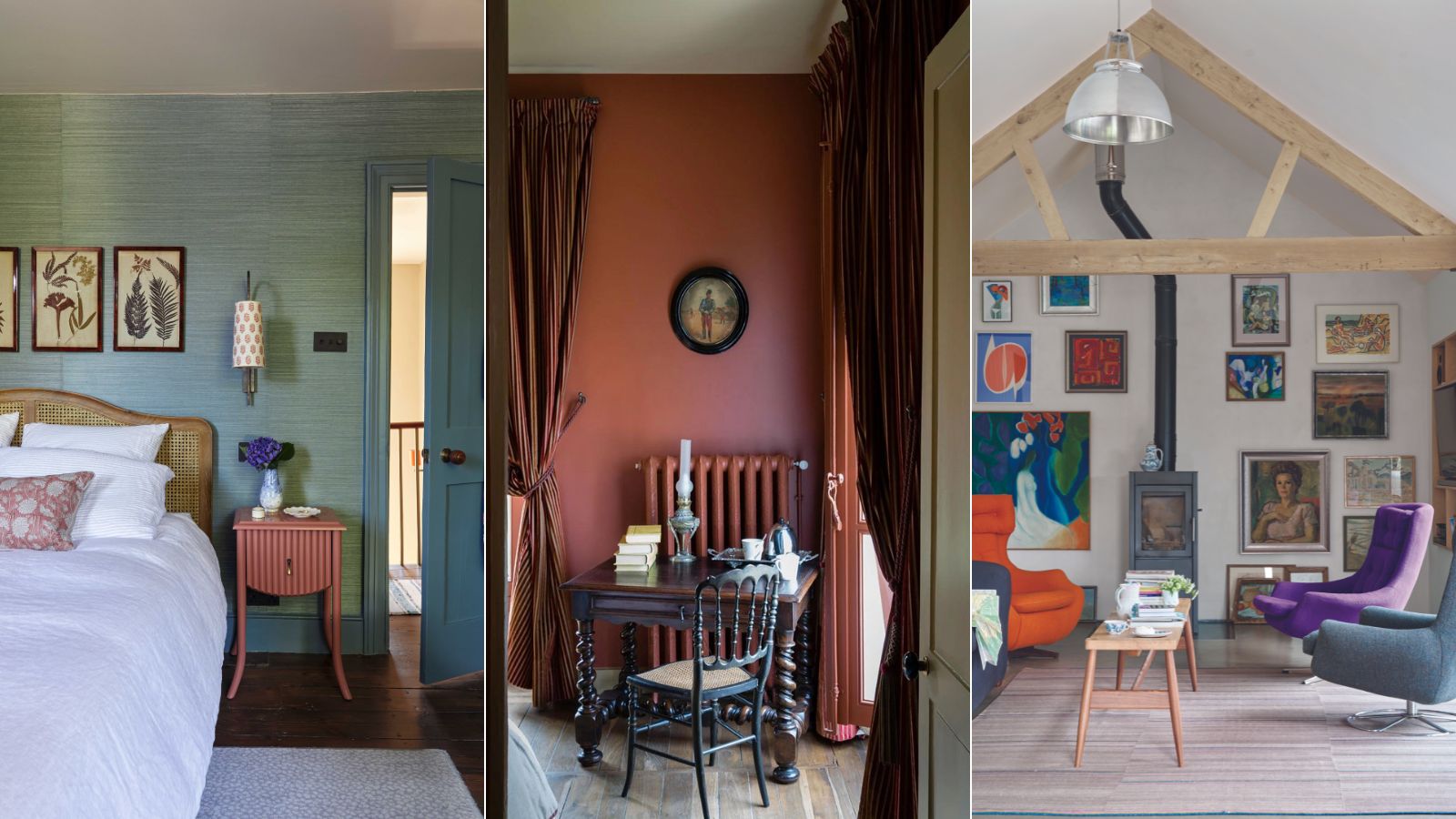
- Iconic interior design trends
- 1. Traditional and heritage styles
- 2. Farmhouse, country, and French decor
- 3. Modernism
- 4. Bauhaus
- 5. Mid-century modern
- 6. California cool
- 7. Mediterranean and worldly styles
- 8. Bohemian design
- 9. Maximalist and eclectic styles
- 10. Minimalism
- 11. Wabi-Sabi
- 12. Japandi
- 13. Scandinavian design

The latest interior design trends never fail to inspire us, and just as fashion changes and precious time moves forward, how we like to decorate our homes is ever-evolving. Our finger is well and truly on the pulse. It is a vibrant and exciting world to keep up with, to say the least. And while we always say that trends should influence our homes, looking to iconic interior design styles for inspiration is a way to ensure you design a home that never dates.
'Over the years, interior design has seen the rise of numerous iconic styles, each with its own distinctive charm and influences,' shares interior designer, Jenni Lauri of Jenni Lauri Design Studio. But with so many interior design styles out there, which are the most iconic in the eyes of today's interior designers?
Iconic interior design trends
As much as we can traverse between different designs and trends, the most iconic interior design styles typically fall into two distinct aesthetic categories: modern and traditional. Within these concrete themes are more distilled sub-styles, all of which represent the mood and feel of a particular era. Jenni Lauri makes it clear that choosing a single favorite style is rare amongst designers and that it is quite the norm to blend looks. You'll find this even in the world's best homes:
'Our favorites are Scandinavian, Japandi, Wabi-Sabi, Boho, Mediterranean, Mid Century, Industrial, Rustic, Modernism, Contemporary, Eclectic, and Traditional. Each of these styles have unique characteristics and subcategories adding a touch of personality to every space.
'In today's interior design landscape, there's a vast array of styles and substyles to choose from, and it's become increasingly popular to mix and match elements from different areas to create unique and personalized spaces.'
Let's dive into the details with help from the experts. Starting with the classics that we know and love and H&G, edging towards the more niche and emerging trends:

Jenni Lauri is a Los Angeles-based interior designer known for her expertise in creating refined and elevated spaces. Her passion for interior design and architecture was sparked at a young age, influenced by her family's deep involvement in the construction and design industry. Specializing in residential and commercial projects, Jenni has an impressive portfolio that includes luxury homes, apartments, office spaces, multi-family buildings, and large-scale developments. Her design philosophy revolves around embracing change while maintaining clean lines, elegance, and simplicity. Drawing inspiration from her Scandinavian and Finnish heritage, Jenni incorporates neutral palettes and cultural touches into her designs. With a UCLA Interior & Architecture extension certificate, she continuously enhances her skills and knowledge in the field to provide exceptional results that reflect her clients' unique personalities and preferences.
1. Traditional and heritage styles
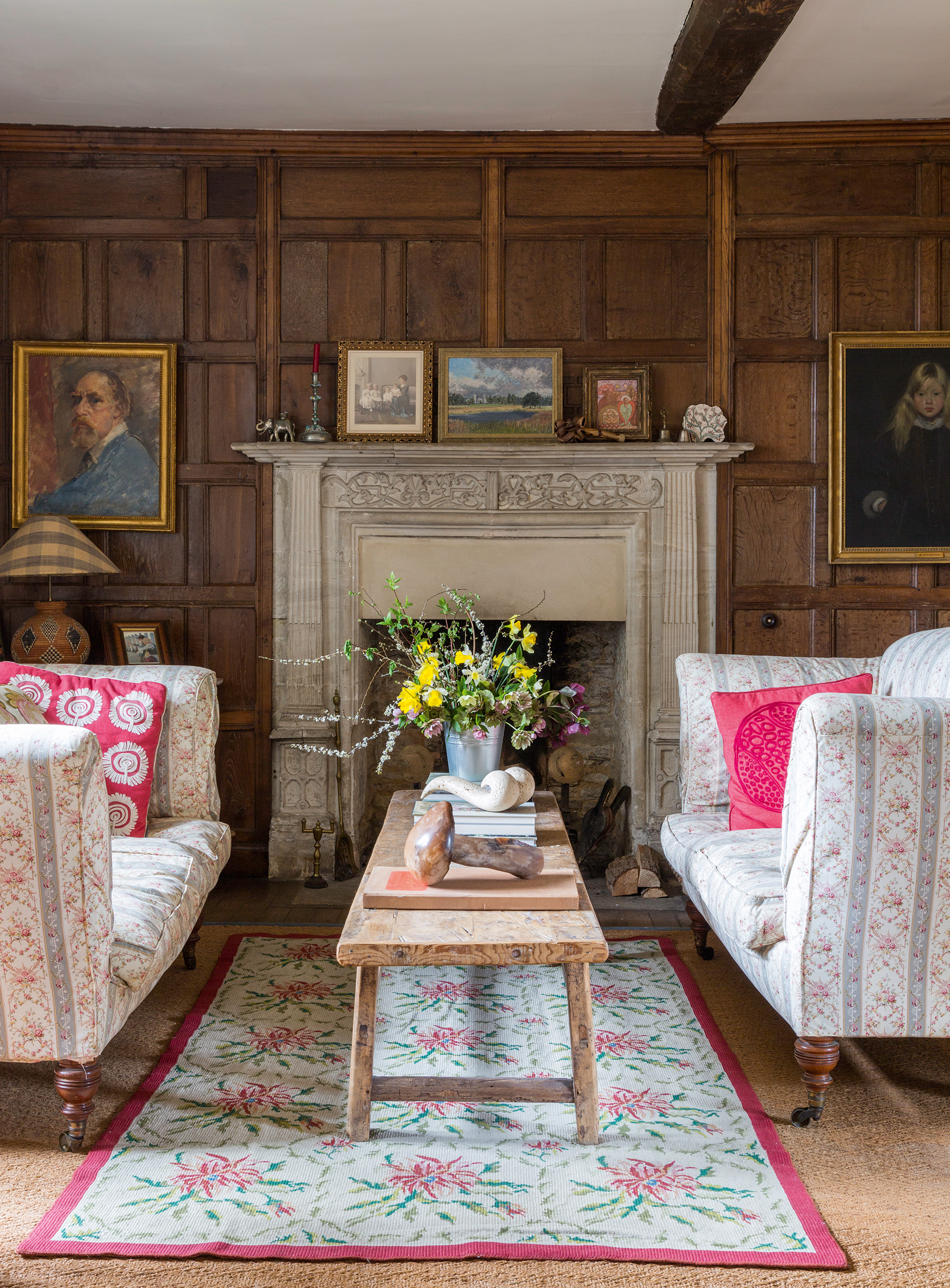
A stunning English Elizabethan Manor.
Heritage interior design styles deserve a space in every home. Accenting a more modern scheme with unique vintage finds is easily done, or vice-versa, depending on your preferences and on the original style of your home.
Design expertise in your inbox – from inspiring decorating ideas and beautiful celebrity homes to practical gardening advice and shopping round-ups.
'Traditional, with its various substyles like Victorian, Georgian, and Colonial, is a testament to timeless design,' notes Lauri.
Victorian design will see spaces making a statement out of fireplaces, choosing grooved paneling such as wainscoting, beautiful sash windows, and charming doors. The style originated in the UK, as the name implies, at the time of Queen Victoria's reign and it offers the perfect opportunity to blend old with the new. This mid-Victorian home is a wonderful example of how to enhance traditional home features with modern additions.
'There are many creative ways to bring heritage style into your home,' adds Lauri. 'Mixing and matching vintage and contemporary pieces, making original features like fireplaces or wall paneling focal points, adding a gallery wall or antique lighting as a pop and restoring your favorite furniture items can all add character and personality to your space.'
Georgian interior design of the 18th century is more luxurious, with high ceilings and ornamental detail as defining design elements. Colonial style boasts richly toned woods, natural textures, and sophisticated tropical detail to exude a sense of travel, and adventure.
These styles can overlap, and bring in contemporary accents too for a modern heritage style: a combination of British and Colonnial. Decorating with antiques is quite the art, be sure to find inspiration from the most exemplary of homes and with our expert interior design tips.
2. Farmhouse, country, and French decor
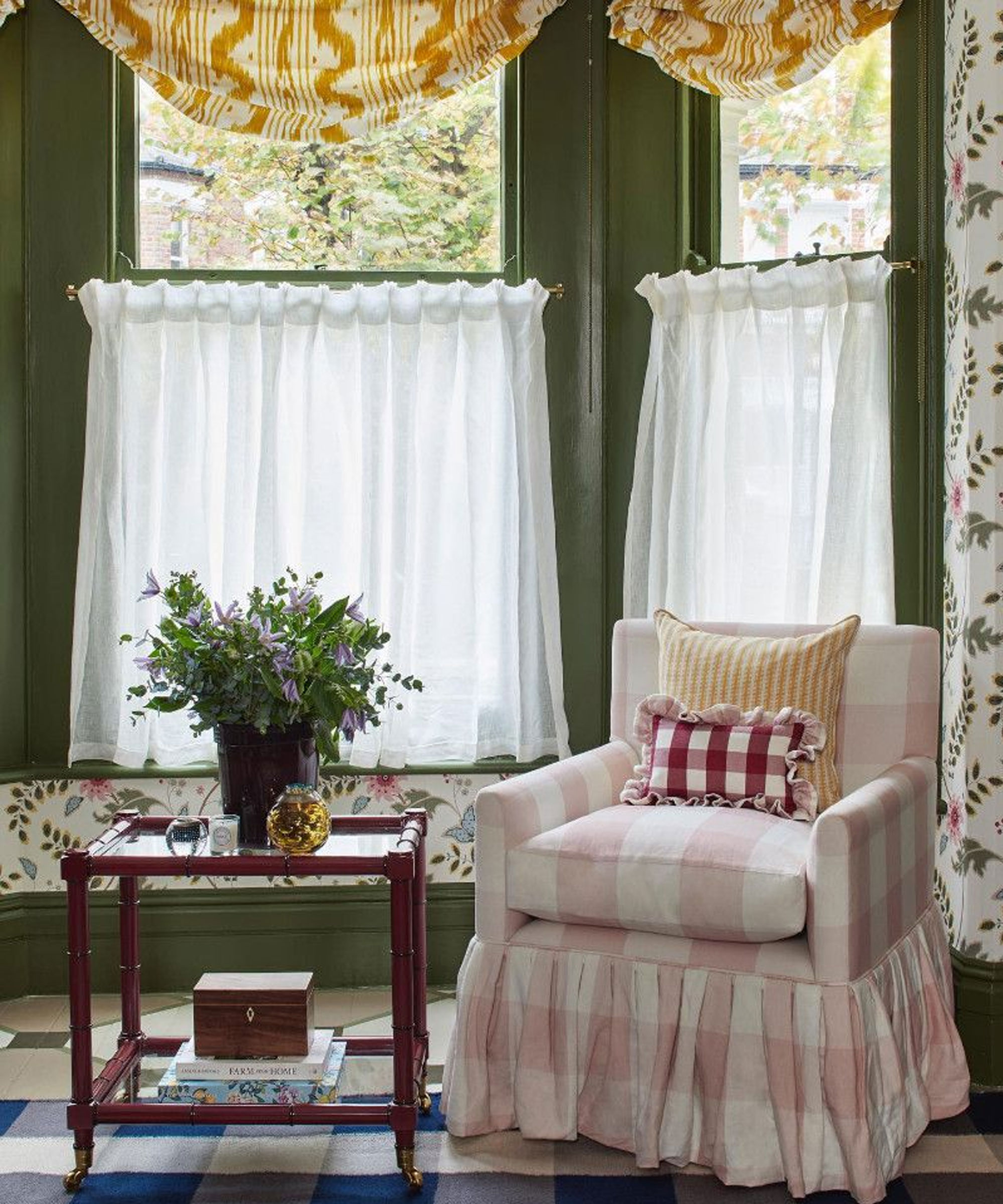
Space created by Salvesen Graham.
In a sense, no matter how big or small an interior design style may be, they can each be iconic as they pave the way for new modernist evolutions. Recent years saw the rise of Cottagecore, combining cottage home roots with modern elegance and clean lines. Still, the rustic charm of farmhouse decor will always have a place in the home,
Humble, nonetheless stylish, as done with a shaker-style where everything has an inherent purpose, without being overly showy. Rustic interiors, are still admired for their warmth and welcoming feel, much like the mismatched, full colorful suites of French country decor can charm household members and guests alike.
3. Modernism

Hugo Landa Garcia
Project: Sierra Towers Primary Bedroom
Photography by Michael Clifford
Many of today's best interior designers take pride in finding inspiration from past great designers and eras they contributed to. 'It's hard to pick one but I would say Modernism is definitely our top favorite. Whether you're designing a residential space or a commercial environment,' says Lauri. 'Modernism's adaptability makes it a go-to style for us. Design that stands the test of time, clean and contemporary aesthetic, neutral color palette, and open spaces are key elements why we love this timeless era.'
In modern-day design, we take aspects of styles past, only to reinvent and refine them in more 'micro' trends. Minimalism gets warmed up in 'quiet luxury home decor' and mid-century modern can be expressed with a difference, via its sister heritage style: The Retro Revival aesthetic, for example.
'Contemporary and modern styles bring a clean and trendy vibe, while industrial exudes that raw and warehouse charm. Scandinavian style embraces the warmth and comfort of "hygge," and mid-century modern adds a touch of the organic and iconic. Rustic celebrates nature and the outdoors, while eclectic is all about the vibrant fusion of styles.'
4. Bauhaus

Within modernism you will find nods to the elaborate luxury of Art Deco while it seems that the 19th century Bauhaus movement is a particular favorite amongst designers: 'Bauhaus isn’t just an aesthetic to be admired, it’s a design ethos that continues to challenge and inspire our work, reminding us that beauty resides in the essence of functionality,' says Artem Kropovinsky, an interior design expert and founder of Arsight.
Bauhaus, with its roots in a German art school that aimed to propel fine design, the arts and craftsmanship. It was also said to be inspired by the likes of William Morris within the British Arts and Crafts movement some years before*.

Based in New York, Artem Kropovinsky boasts extensive global design
experience spanning a decade. With a commitment to sustainability and
authenticity, Artem, alongside his dedicated team, undertakes projects
both in the US and internationally, earning recognition through
prestigious design awards. Artem is the founder of Arsight, an esteemed global design firm known for its expertise in residential and commercial interior design.
5. Mid-century modern

Evolving from as early as 1945, through to the 1960s, Mid-century modern interiors interiors are simple, filled with distinctive craftsmanship, architectural furniture, and warm colors. It is distinctive and sought after, and we owe much of its contemporary and clean aesthetic to architects such as Le Corbusier and Richard Neutra.
6. California cool
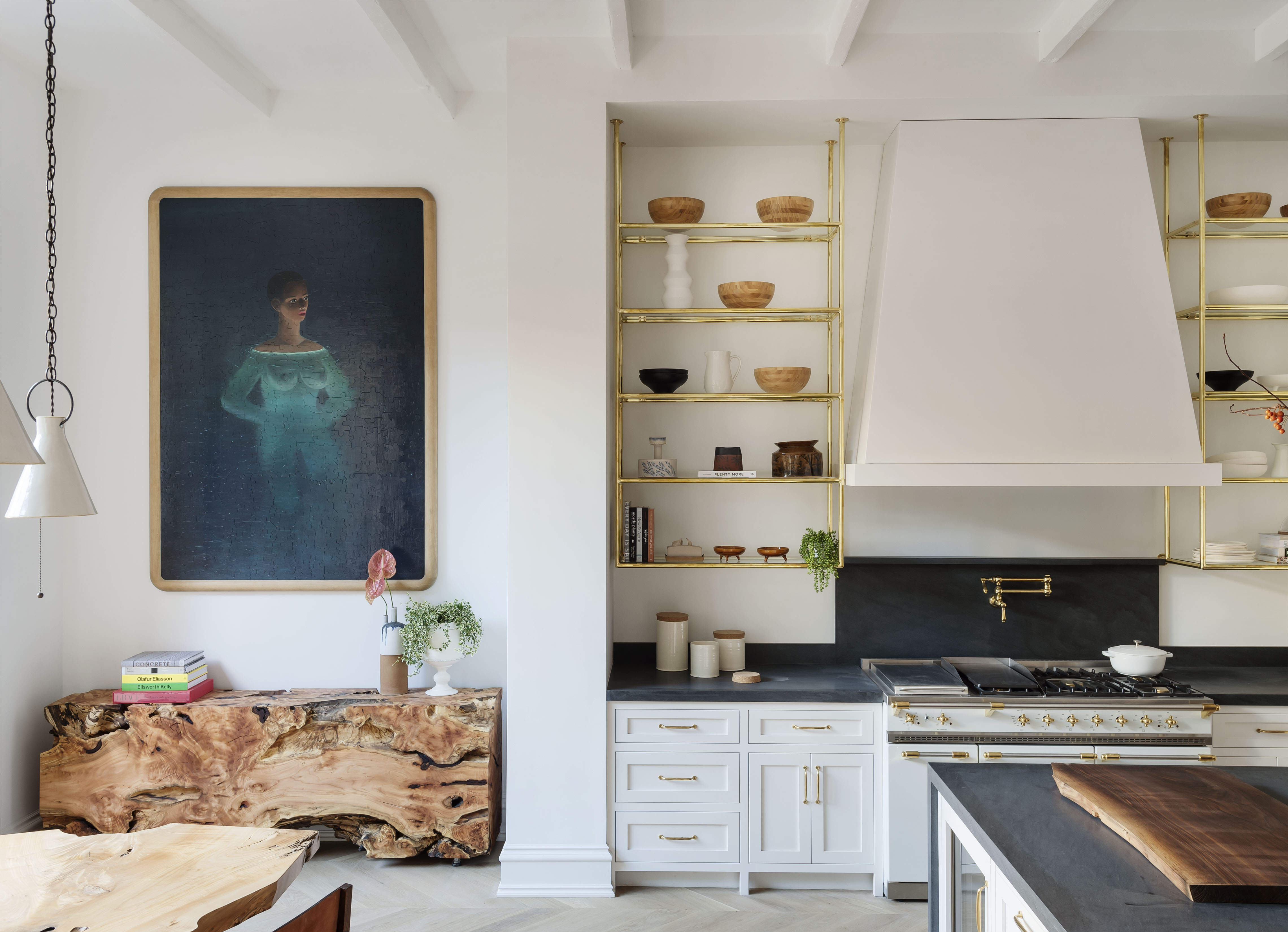
Kitchen space by The Brooklyn Home Company.
That relaxed, laid-back West-coast aesthetic, effortlessly channeled by interior designers like Amber Lewis, with specific California decor trends enjoyed wholeheartedly even by H&G's very own Jennifer Ebert.
Think coastal farmhouse style notes, and washed-out tones with elements of driftwood and textured fabrics to bring California Casual into your home. It makes quite the contrast to East Coast style interiors which are none-the-less impactful, but slightly bolder in finish.
7. Mediterranean and worldly styles
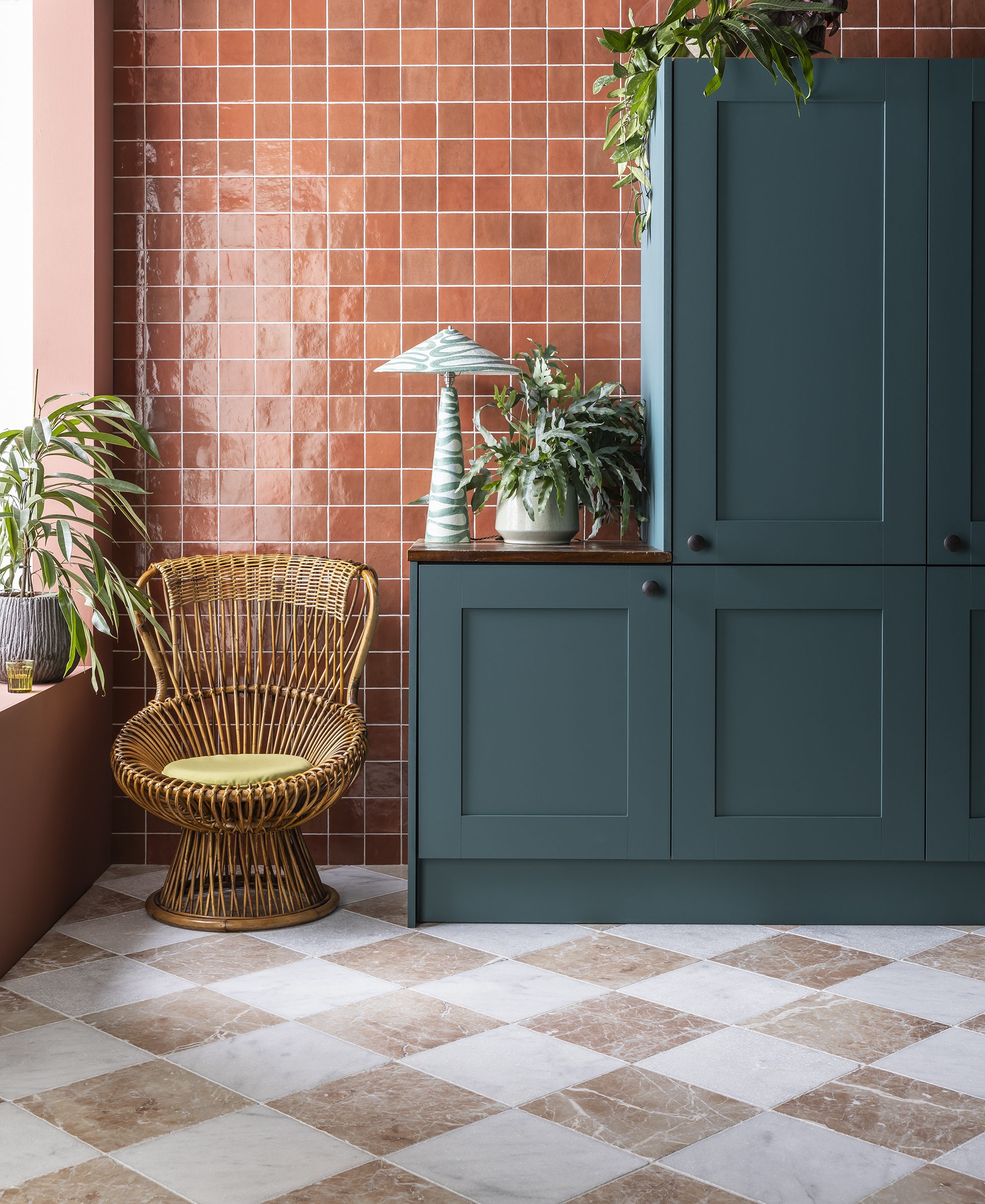
Mediterranean decor is relaxed, yet brimming with colorful patterned tiles, colors of sea and sky, kindly juxtaposed against soft plaster tones and light-washed finishes.
Exciting tile, bright paint colors, and bespoke furniture can bring a unique flair of this interior design style to a space. Take Kirsten Dunst's Spanifornia living room for inspiration. In keeping with vibrant tones, and sculpted detail, Mexican decor that transverses many different eras of design: from Pre-columbian to contemporary, is no less of an influential style to be invited into our homes.
8. Bohemian design

A little shabby, in all the right ways, bohemian decor is inviting and unfussy, without looking unfinished. Colors are earthy, tonal, bright, and rich, textures are layered, a little loose and it can be interpreted in multiple ways and in most home spaces.
Bohemian decor comes straight out of 19th Century Paris with great influence from artists that led a more free-spirited lifestyle. It is both eclectic and romantic; while it can be bold and subtle. Jungalow founder Justina Blakeney's distinct patterns and powerful use of color define this style well. More recently, Tish Cyrus showed us how to do 'California boho chic' with her freshly painted entryway.
9. Maximalist and eclectic styles
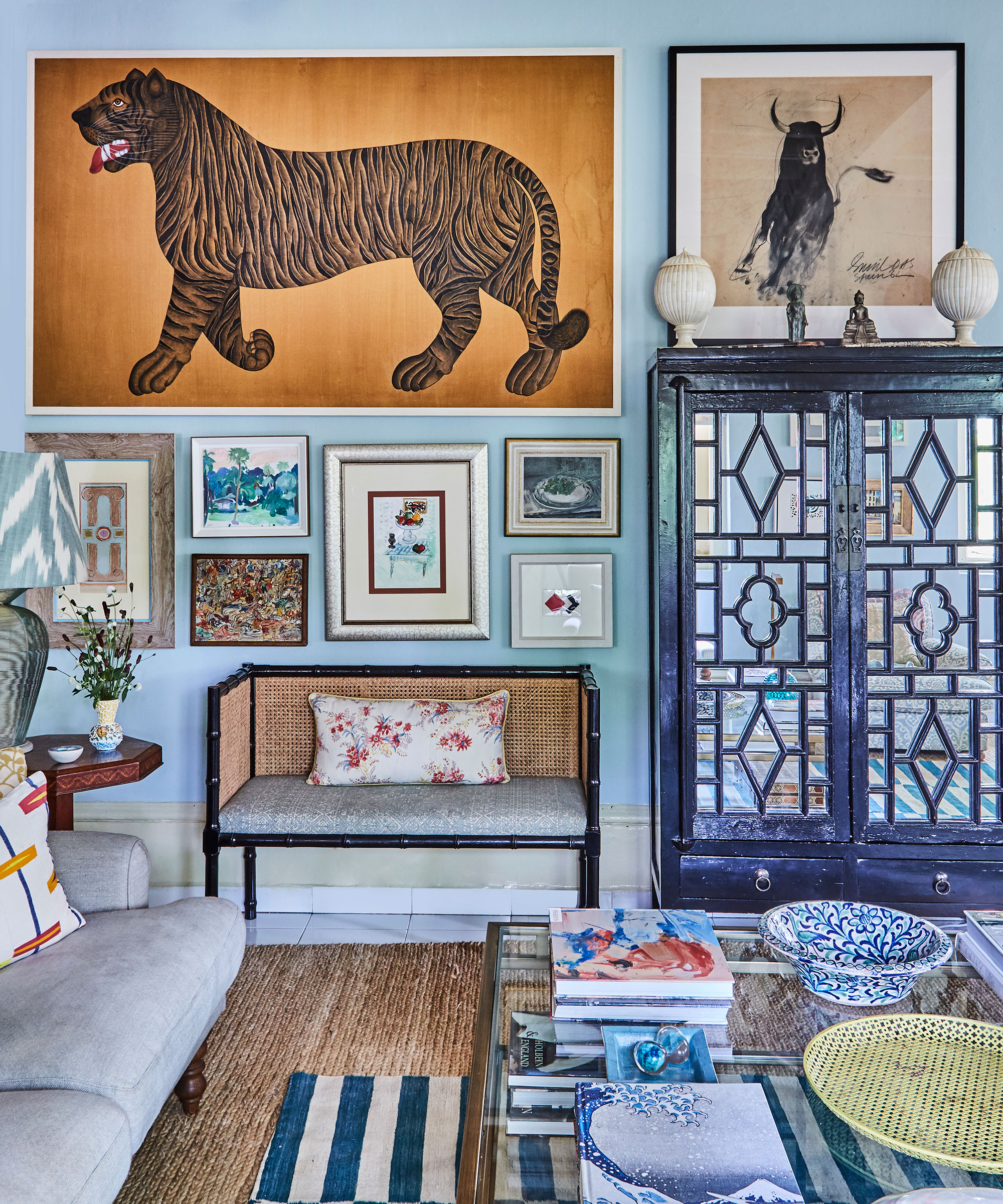
Maximalism is loud but not arrogant, and when done well it will not be overwhelming but a harmonious burst of energy and delight. For these iconic interior styles, we can take inspiration from Kelly Wearstler's dramatic and luxurious approach to spaces that draws on nature, architecture, and fashion. It is one to be admired, edited, and loved even more over time.
10. Minimalism
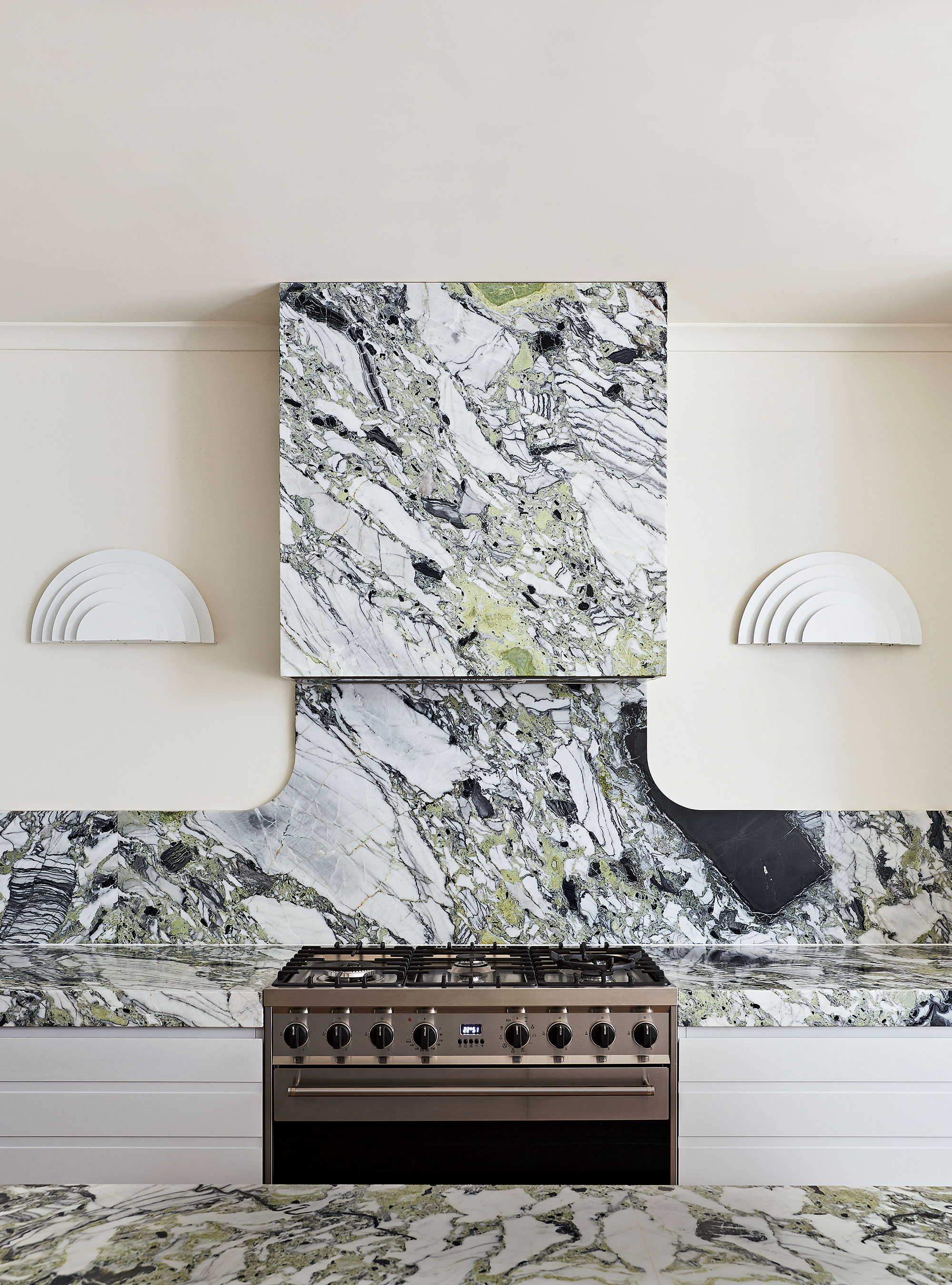
Though minimalism has a sore reputation for being cold and uninviting, we can still pay homage to its roots for it has inspired many more modern micro trends of late. Minimalism can simply be applied to many different styles and interpreted how you would like it.
11. Wabi-Sabi

The imperfect charm of Wabi-Sabi home design is emerging in our homes. It is not new but coming more into the spotlight recently. Internationally celebrated interior architect, designer and property developer, Shalini Misra, told H&G that Wabi Sabi is the most iconic interior design style everyone should know about, here is why:
'Wabi Sabi is not just a design style; it's a personal philosophy deeply embedded in Japanese culture. For me, incorporating Wabi Sabi into interiors isn't just about aesthetics—it's about creating a space that uplifts, meditates, and inspires in the midst of daily life. Wabi Sabi draws inspiration from Buddhist teachings, encouraging an appreciation for life's imperfections. In interior design, it's a celebration of the 'imperfect, incomplete, and transient,' crafting spaces that mirror the ever-changing beauty of life.'
Misra chooses authentic colors to create the Wabi-Sabi aesthetic: 'My go-to palette includes muted, earthy tones like brown, green, grey, beige, and terracotta—a reflection of the inimitable beauty of the natural world.'
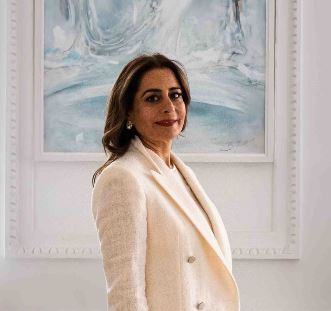
Internationally celebrated interior architect, designer and property developer, Shalini Misra, has been creating spaces since she founded her practice over 20 years ago. Shalini qualified architect at the Delhi School of Architecture and Planning (SPA) in India, and specialized in Urban Planning at the University of Columbia in New York, before studying Virtual Reality in Architecture at the Bartlett School of Architecture in London.
12. Japandi

The calming aesthetic of Japandi lends itself perfectly to modern and more traditional homes alike. Combining notes of Scandinavian design with pared-back elements of Japanese interiors, this iconic interior design style was particularly popular post-pandemic for its calming and orderly finish that honours craftsmanship and nods to slow living.
13. Scandinavian design
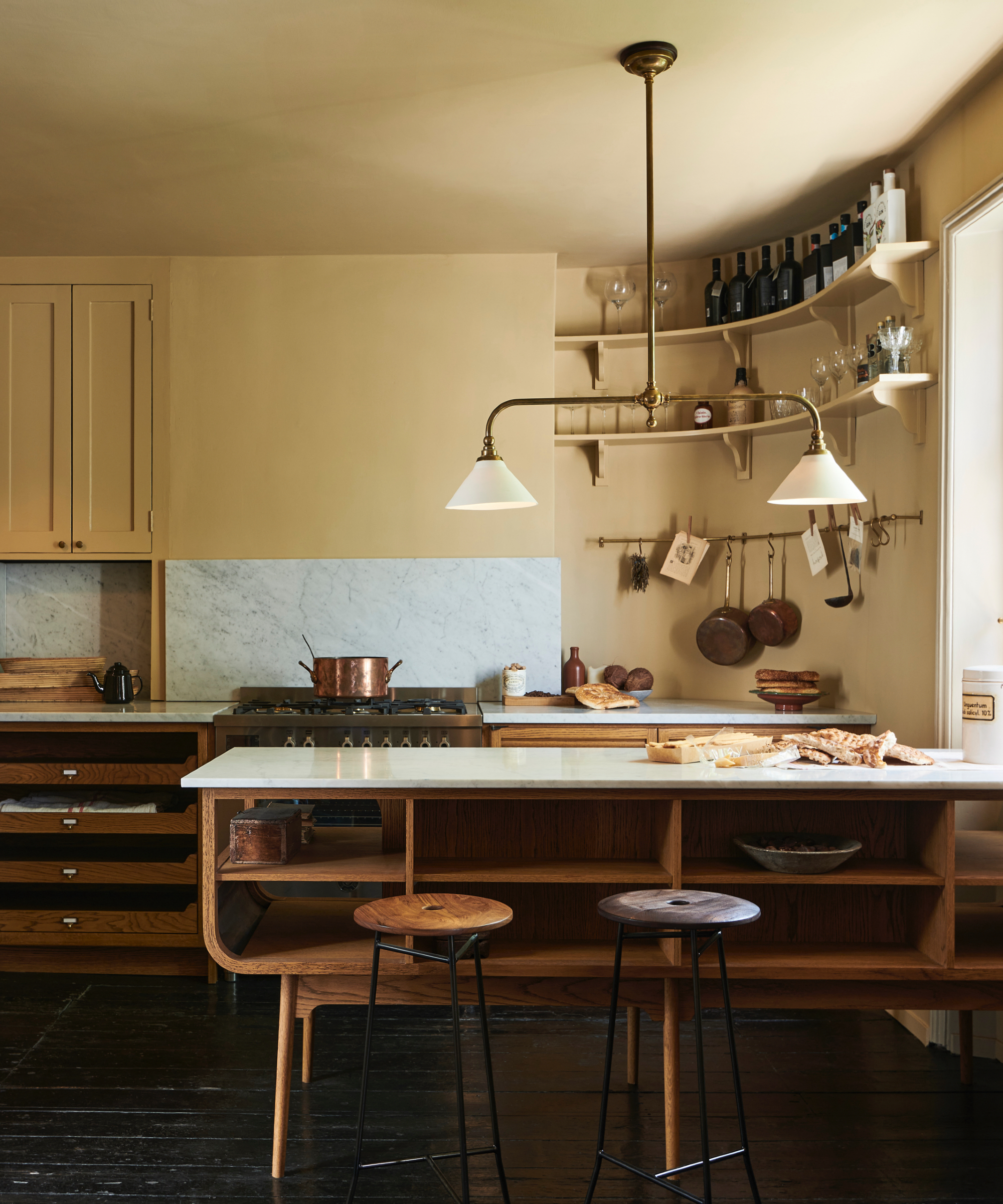
Scandinavian design is inherently architectural, thoughtful, and modern, all whilst being cozy and inspiring, it is no wonder that it is perhaps one of the most influential and iconic interior design styles around. Many homes happily embrace the concept of Hygge, especially at the onset of fall. Some may even be familiar with Friluftsliv...
Swedish Interior Designer, Christina Richardson shares her time between Nevada, South Carolina, and Sweden. Richardson highlights how there is much more to Scandinavian design than meets the eye:
'Scandinavian design is all about function, light and beauty. Sweden and Scandinavia were poor countries with very limited daylight during parts of the year and we had to make the most out of everything. We had to make our spaces feel warm, functional and light at the same time. I think that combination speaks to many people, especially in big cities were space and light is limited and functionality is on top of the agenda.
'I think the Scandi style will continue to grow as we are getting more and more conscious about our environment with the conscious use of space and light and with high-quality, long-lasting furniture.

Christina Richardson is an American interior designer with deep roots in the northern part of Sweden.
With her intuitive eye for design, and the ability to architect her ideas into fruition, it’s no wonder her company, Christina Richardson Interiors, is in demand all over the U.S. and in Europe.
What influences interior design trends?
Society and world events can all influence interior design movements and our own home decor choices. The rise of social media sparks new ways of trends unveiling themselves, and inspiration for professional interior designers and amateurs alike.
'I think fashion has had such an influence on the interior design world,' notes Devon Wegman, designer director and founder of Devon Grace Interiors. 'With the dawn of social media, came the first time people were really showing their homes off to people other than family and immediate friends. All of a sudden, people started caring about the design of their homes the same way they think about how they dress and present themselves to the world each day. People's homes should be an extension of themselves and almost fall into the same category as their wardrobe and fashion.'

Devon Grace Interiors is an award-winning full-service design and general contracting firm specializing in inspiring luxury residential and commercial projects. Based in Chicago and led by husband and wife duo Devon and Michael Wegman, DGI synthesizes architecture, construction, and design disciplines to create thoughtful spaces to live, work, and play. With a multidisciplinary background and years of experience working with some of the most prestigious architecture and design firms, Devon has honed her eye for contemporary, textural design
Is it a good idea to blend interior design styles?
Always. Blending interior design styles is an art in itself and will make every space more unique.
'Inviting elements from different design movements into a space is like curating a collection of stories, each piece a narrative anchor to an era, a technology, or a cultural shift,' says Kropovinsky.
Whether you collect trinkets on your travels, or try your hand at furniture design, there are many different ways that designer greats from the past can help develop your present home space.
'Honoring traditional design eras is akin to storytelling through space, where each curve and cornice is a character, and the fusion with modern elements is the plot twist that keeps the narrative fresh. To weave the language of historical design eras into today’s.'
How can you find your own interior design style?
Look to past trends, and pay homage to spaces that make you feel inspired. Wegman encourages us to all find our own unique sense of style, noting that our present time is the perfect moment to explore how you decorate your space: 'This current era is my favorite because people are getting so much more bold and personal with interior design. Gone are the days (in my opinion) of pulling the latest trends into your home, or copying what your neighbors did, and in its place is a refreshing change where people are actually inserting their own personal brand and aesthetic into the space. The same way people pull an outfit together that reflects their style and personality, their home becomes an expression of themselves as well. With that, I love how unique each one of our projects are because each one tells the story of its unique owners.'
If you need a gentle influence for iconic modern styles to try from the last decade or so, Lauri recommends Scandinavian and Wabi-Sabi trends.
'Scandinavian design is known for its clean lines, functionality, natural materials and emphasis on creating bright, airy spaces. It's versatile and suitable for a wide range of interiors. On the other hand, Wabi-Sabi design is deeply rooted in Japanese philosophy, emphasizing imperfection and the beauty of patina. It has a more organic feel, with an earthy color palette and a focus on embracing the imperfect. Wabi-Sabi design often creates a Zen-like atmosphere.'
Interior design is ever-evolving and can even present itself differently from one country to the next, giving it a unique spin between borders but also connecting us.
The most iconic interior design styles bring joy and life to spaces, impacting surroundings positively, and bringing endless hope for even more exciting design prospects to come. While we trust that your home is styled to near perfection, thanks to your inherent good taste, and a few interior design pointers from yours truly, there is no harm in seeing whether there are any iconic styles that might have passed you by. Designers block is a thing of the past...

Camille is the former deputy editor of Real Homes where she covered a broad range of topics, including house tours, small space design, and gardens. She studied English language and Italian at the University of Manchester and during a year abroad studying linguistics and history of art in Bologna, Italy she started documenting her adventures and observations in a blog. Camille is always creating and spends her downtime painting, taking photos, traveling, and writing short stories.